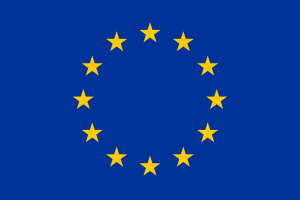RELATIONS WITH THE EU
The European Union and the Economic Community of Central African States
The region of Central Africa includes 11 countries: Angola, Burundi, Chad, Equatorial Guinea, Gabon, Cameroon, the Central African Republic, the Democratic Republic of Congo, the Republic of Congo, Rwanda and Sao Tomé and Principe. It has to be noted, however, that Equatorial Guinea never signed the revised Cotonou Agreement, and can therefore not directly benefit from EDF funding. The region has a total population of about 160 million with the Democratic Republic of Congo accounting for nearly half. It is a region rich in natural resources, covering the largest tropical forest area after the Amazon.
На оваа страница
Political Relations
Political relations between EU and ECCAS
Cooperation between the EU and Central Africa is part of the continuity of a cooperation dynamic already well established and in line with the regional strategies of ECCAS and CEMAC.
It also acts as a complement to the national indicative programs signed between the countries of the region and the European Union and also takes into account the support of other donors.
Three priority areas are:
- Political integration and cooperation in peace and security.
- Economic and commercial integration (including economic infrastructure).
- Sustainable management of natural resources and biodiversity.
Development Cooperation
Cooperation between the EU and Central Africa
The 11th EDF Central African Regional Indicative Program was signed between the EU, ECCAS and CEMAC in Brussels on 23 June 2015. The Central African RIP amounts to EUR 327 M. The three focal sectors are:
- Political Integration and Cooperation in the Peace and Security Sector, EUR 43 M, aims at improving the political stability in the region as well as enhancing democratic governance.
- Actions under the Economic Integration and Trade Focal Sector, EUR 211 M, aimed at supporting inclusive economic development and regional economic integration. They will focus on strengthening the capacities of regional and national institutions to establish an integrated regional market. There is also support for interconnecting regional infrastructures via blending and for accompanying measures for an Economic Partnership Agreement (EPA).
- Sustainable Management of Natural Resources and Biodiversity, EUR 88 M, focuses on actions supporting the preservation of biodiversity and fragile ecosystems as well as providing support for sustainable management of natural resources. The projects will address not only conservation needs (selected protected areas) but also the socio-economic development of populations settled in the surrounding areas.
Regional Programs
PARCIC – PASSMAR - AFRITAC III- PAIRIAC - ECOFAC VI
The overall objective of the ECCAS reform and institutional capacity-building support program (PARCIC) is to improve regional political stability and democratic governance in Central Africa.
The support program for the maritime safety and security strategy in Central Africa (PASSMAR) intervenes in the field of maritime safety and security and the strengthening of maritime governance.
The AFRITAC Center Phase III Support Project will strengthen the institutional and human capacities of Afritac Center Member States through technical assistance and training in macroeconomic and financial management.
Support Program for Regional Integration and Investment in Central Africa (PAIRIAC) strengthens the capacities of the structures dedicated to regional economic communities (CER - ECCAS and CEMAC) in the governance of cross-border corridors.
ECOFAC VI promotes the conservation and rational use of heritage foresters in Central Africa. It also takes into account the socio-economic and faunistic aspects of the environments analyzed.



